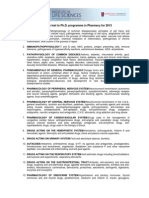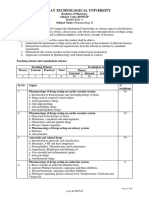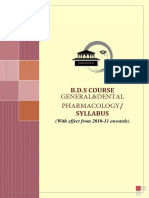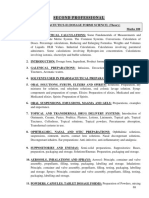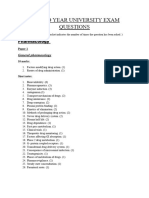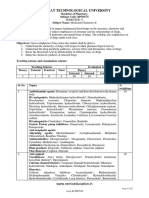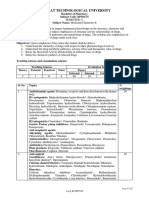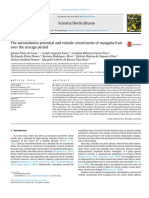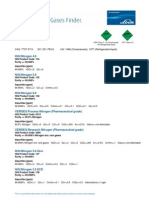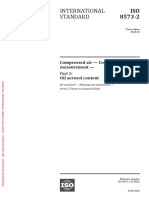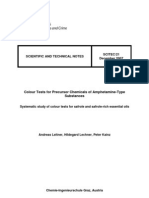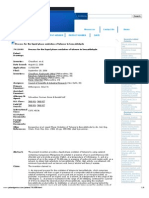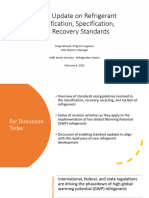0% found this document useful (0 votes)
94 views22 pagesSyllabus Third Proff
This document outlines the curriculum for the third professional year of a pharmacy program. It includes details on 14 papers across theory and practical components covering subjects like pathology, pharmacology, pharmacognosy, pharmacy practice, and pharmaceutical chemistry. Marking schemes and objectives are provided for each paper.
Uploaded by
medicaltown123Copyright
© © All Rights Reserved
We take content rights seriously. If you suspect this is your content, claim it here.
Available Formats
Download as PDF, TXT or read online on Scribd
0% found this document useful (0 votes)
94 views22 pagesSyllabus Third Proff
This document outlines the curriculum for the third professional year of a pharmacy program. It includes details on 14 papers across theory and practical components covering subjects like pathology, pharmacology, pharmacognosy, pharmacy practice, and pharmaceutical chemistry. Marking schemes and objectives are provided for each paper.
Uploaded by
medicaltown123Copyright
© © All Rights Reserved
We take content rights seriously. If you suspect this is your content, claim it here.
Available Formats
Download as PDF, TXT or read online on Scribd
/ 22

















